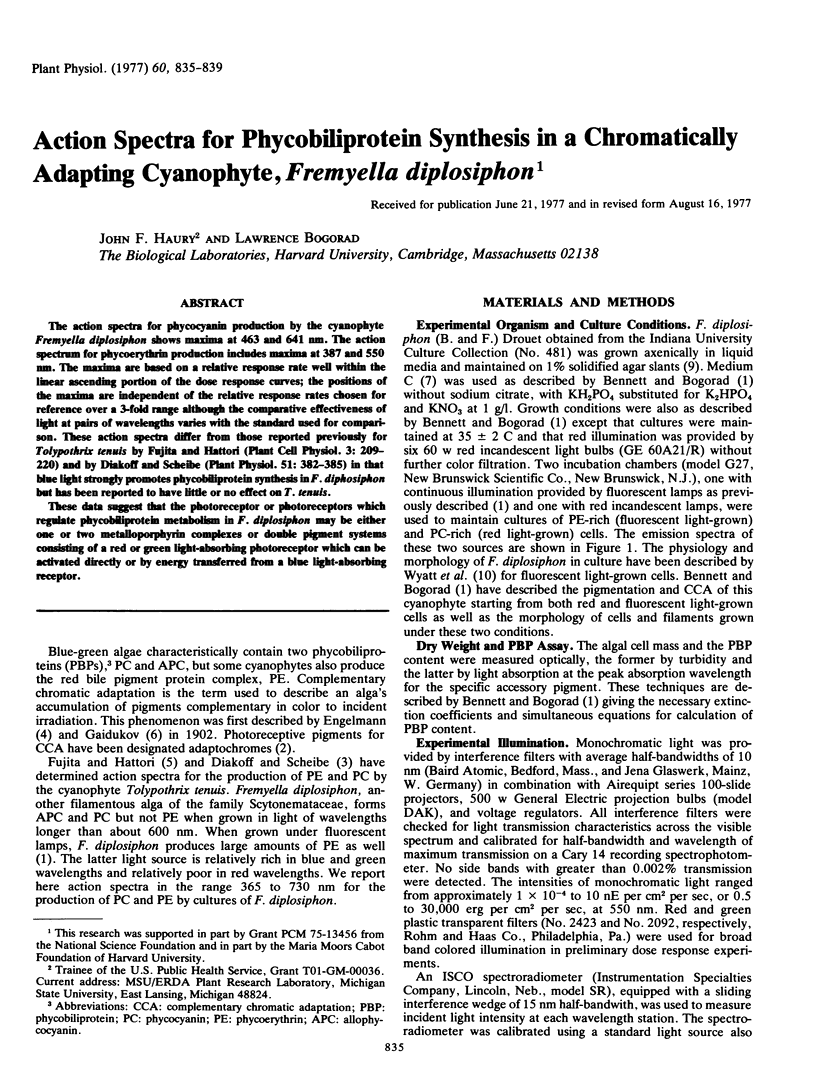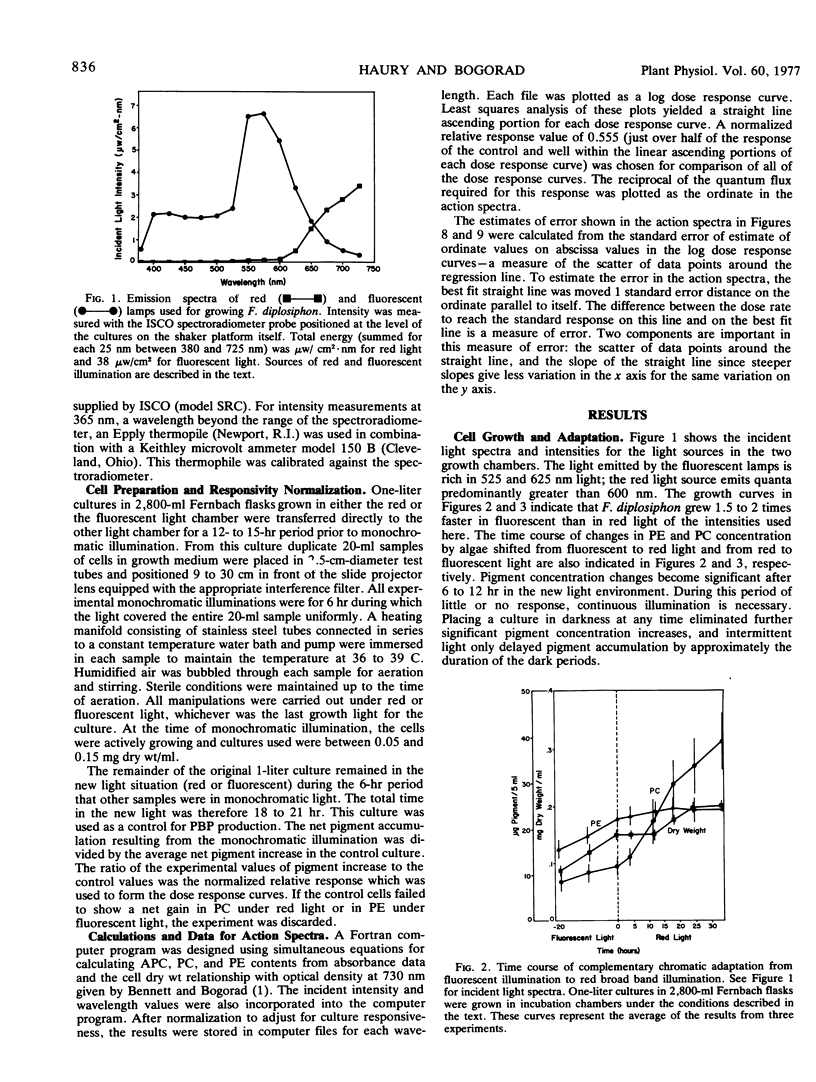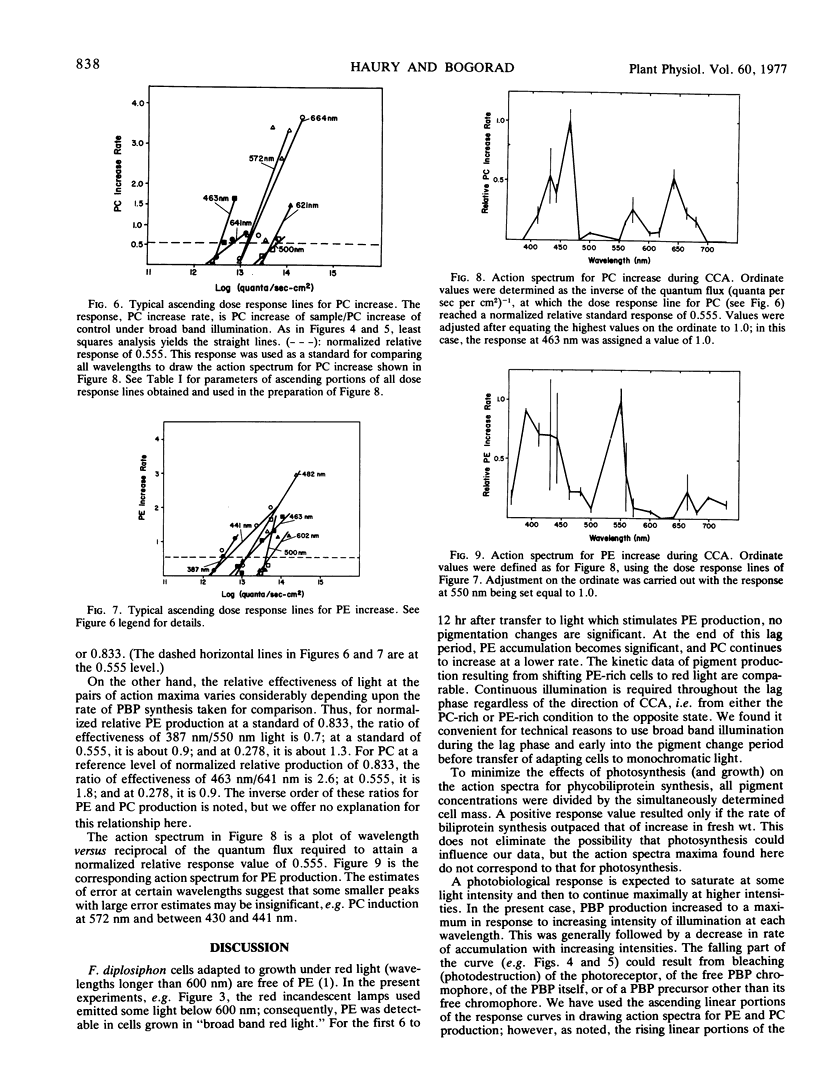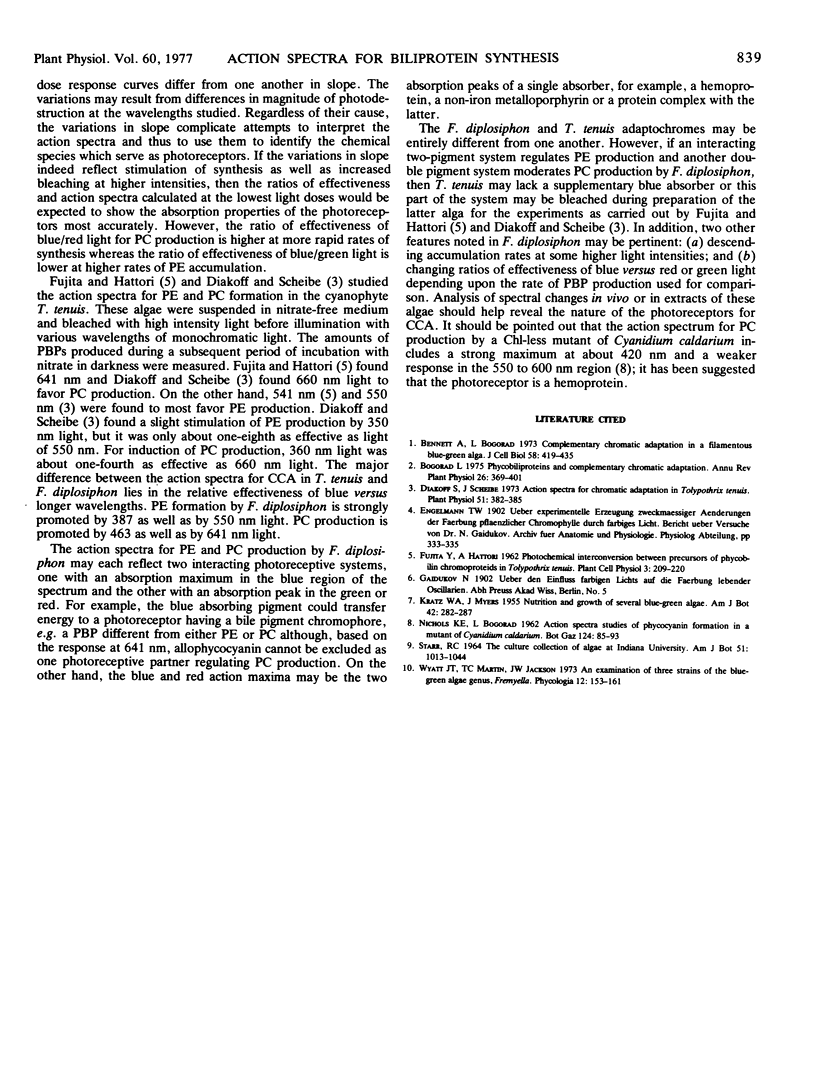Abstract
The action spectra for phycocyanin production by the cyanophyte Fremyella diplosiphon shows maxima at 463 and 641 nm. The action spectrum for phycoerythrin production includes maxima at 387 and 550 nm. The maxima are based on a relative response rate well within the linear ascending portion of the dose response curves; the positions of the maxima are independent of the relative response rates chosen for reference over a 3-fold range although the comparative effectiveness of light at pairs of wavelengths varies with the standard used for comparison. These action spectra differ from those reported previously for Tolypothrix tenuis by Fujita and Hattori (Plant Cell Physiol. 3: 209-220) and by Diakoff and Scheibe (Plant Physiol. 51: 382-385) in that blue light strongly promotes phycobiliprotein synthesis in F. diphosiphon but has been reported to have little or no effect on T. tenuis.
These data suggest that the photoreceptor or photoreceptors which regulate phycobiliprotein metabolism in F. diplosiphon may be either one or two metalloporphyrin complexes or double pigment systems consisting of a red or green light-absorbing photoreceptor which can be activated directly or by energy transferred from a blue light-absorbing receptor.
Full text
PDF




Selected References
These references are in PubMed. This may not be the complete list of references from this article.
- Diakoff S., Scheibe J. Action Spectra for Chromatic Adaptation in Tolypothrix tenuis. Plant Physiol. 1973 Feb;51(2):382–385. doi: 10.1104/pp.51.2.382. [DOI] [PMC free article] [PubMed] [Google Scholar]


